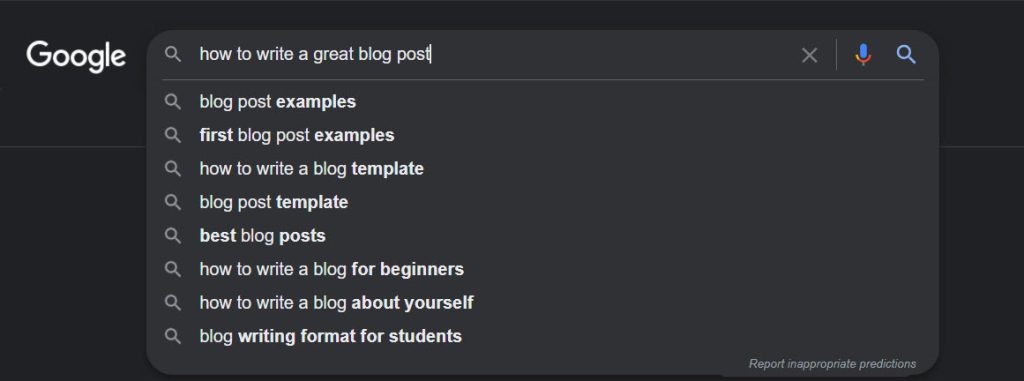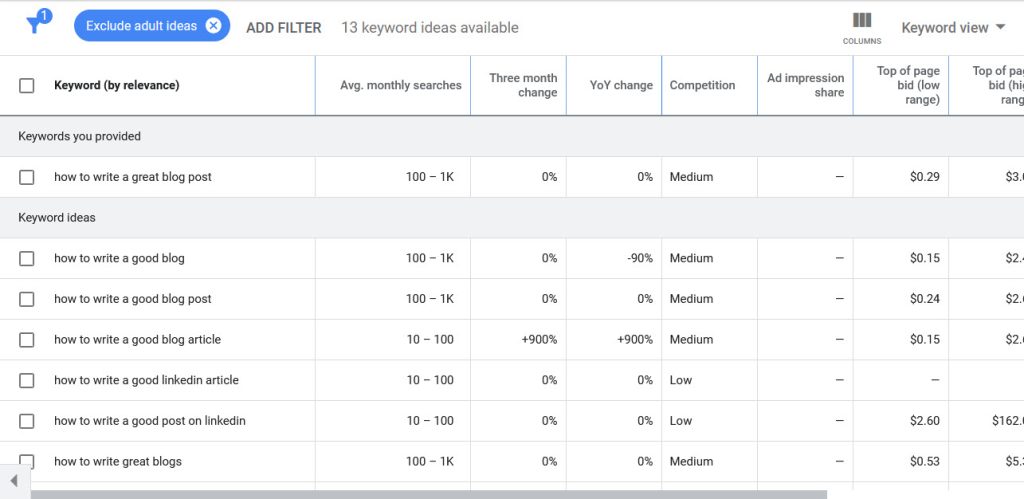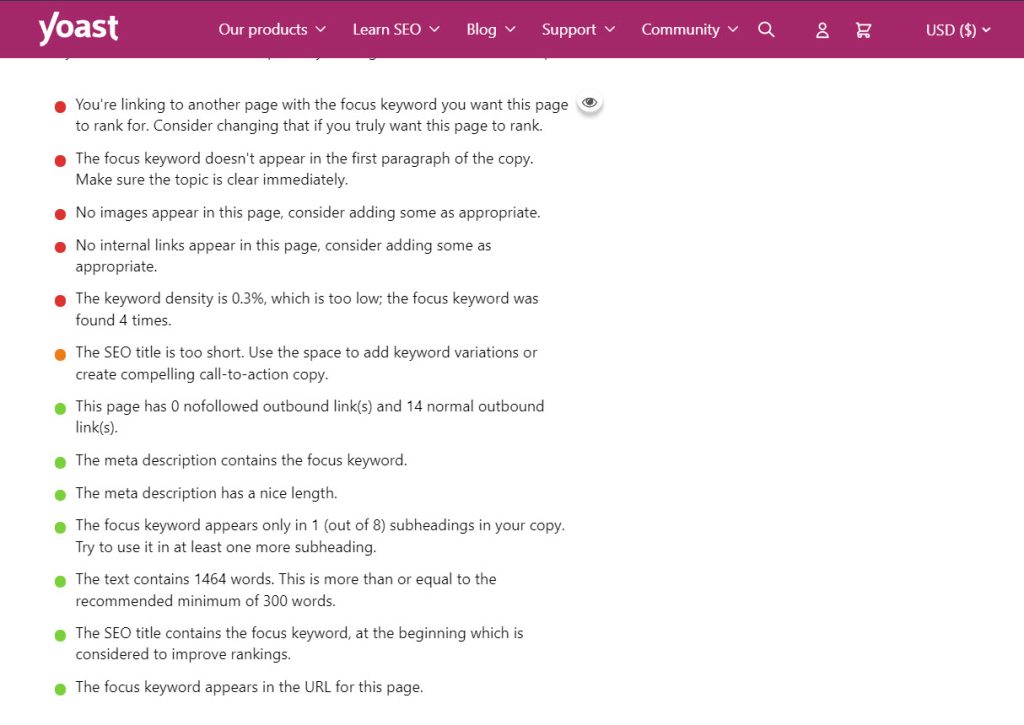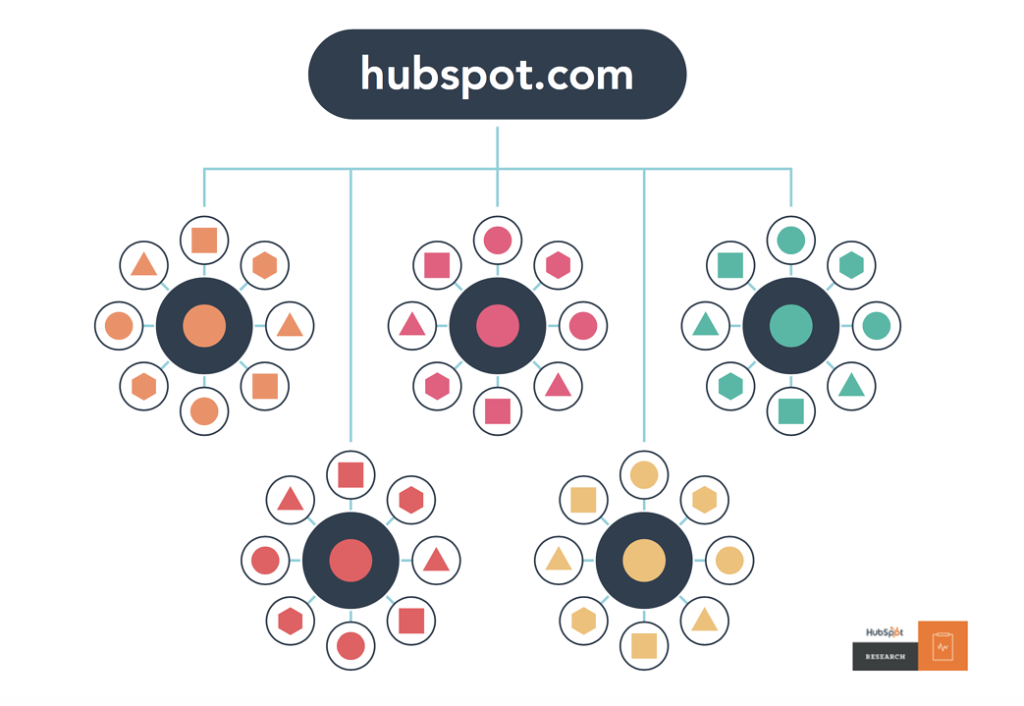SEO Copywriting: 6 Tips for Better Content and Rankings
The goal of copywriting is to help your audience or readers move down your sales funnel, whether to make them more aware of your brand or turn them into customers.
Quick Links
On the other hand, SEO has a different objective: to help rank your created content on search engine result pages (SERPs) for your target keyword. By ranking on top of SERPs, you can generate more website traffic, thus helping you get more customers and clients.
Combining both, you can create content that achieves both goals. This way, you can maximize your content’s ROI and help grow your site’s revenue.
This post discusses tips you should apply in your SEO copywriting to soar above the crowd with the content you produce.
#1 – Research the Right Keywords
Targeting the right keyword is the foundation of every successful SEO campaign, starting with content. Once you’ve determined the keyword you must use, implementing the best copywriting tips should be much easier now that you have a more precise direction of what to write about.
When researching keywords, Google search will be your best friend. A quick look at SERPs should provide you with keyword ideas to optimize for the topic.

The autocomplete section gives you a list of related keywords about your initial search query that you can write about. The suggestions here come in handy, especially if your initial search query is too broad.

On SERPs, the People Also Ask (PAA) section shows you the questions you must answer about the topic. You can use the keywords here as subheadings for the article you’ll write using the keyword you typed on the search box. You can also optimize them in a separate article to help form your topic cluster (more on this later).
Once you’ve exhausted the keywords using Google search, you can move on to using Google Keyword Planner.

The tool will provide more keyword ideas and suggestions, complete with the number of searches each receives in a month. Use this data to ensure that you write content optimized for a keyword people use when they search on Google.
For advanced users: You’ll want to use tools like Ahrefs and SEMrush that not only provide you with the difficulty score of each keyword (the higher the score, the more difficult it is to rank for it) but also research the keywords for which your competitors are ranking.
Researching keywords is one of the most important SEO tasks you can’t afford to get wrong. Following the steps above should help you find many keywords to optimize over a period. However, you can speed the process by hiring an SEO expert who will do the dirty work for you to focus on writing excellent copy and content.
#2 – Understand the Keyword’s Search Intent
Not all keywords are the same in value, and we’re not just talking about metrics like search volume and keyword difficulty. We want to know the search intent of the keyword you want to optimize.
If you want to make the most out of your content, you need to develop a B2B sales funnel that will help you make sense of the website traffic you’re receiving. The goal of the sales funnel is to help you attract the right audience to your site and bring them closer to converting as customers.
The sales funnel also acknowledges that not everybody is ready to become a customer right now. Some are just learning about your brand, while others are still deciding whether to become one.
Applying SEO to this concept, you must target keywords that will help you fill out the different stages of your funnel, from awareness down to the evaluation and purchase stages.
There are three types of search intent you must keep in mind to help you identify which keywords belong to which stage of the funnel:
- Informational – Provides solutions to problems, for example, “how to write a great blog post”
- Navigational – Provides the location of a page on a specific website, for example, “Bloggingpro how to create blog guide”
- Transaction – Helps users in the purchasing or decision process, for example, ”best blogging platforms”
You can categorize the three according to their appropriate stages in the sales funnel. Keywords with informational and navigational search intents should go in the awareness stage, and transaction keywords are best placed in the consideration and evaluation stages.
Navigational keywords can also go in the lower part of the funnel where your audience is close to converting, e.g., pricing pages (“Ahrefs pricing”) or product landing pages (“Copyhackers copywriting courses”).
#3 – Optimize Your Keyword
Once you’ve found the keywords, it’s time to optimize each one.
For starters, you must include your keyword on the content’s SEO title and page title (or H1 title). In most cases, the SEO and H1 titles are the same.
But if you’re using a tool like the WordPress plugin Yoast SEO that allows you to write a unique SEO title and page title, including the keyword in each is a must. Both are highly regarded ranking factors — by placing your target keyword in them, you have already optimized half of your content or copy.
Another way to optimize your target keyword is by including it in the page’s URL. Considered one of the most technical SEO factors, adding your keyword on the URL is simple, especially if you’re using a content management system like WordPress.
Next, you need to worry about writing an optimized piece of copy or content. Going back to tools like Yoast SEO, you can measure your content’s optimization by referring to its Content Analysis feature. It works like a checklist, showing you where you need to include certain factors about your content to increase its score.

If you’re not using WordPress, there’s a web version of the tool that you can use to review your content before publishing.
The goal is to observe all the suggestions provided by Yoast — as much as possible. The more green circles you see, the more optimized it is for your target keyword!
But maybe we’ve gotten ahead of ourselves. If you’re still looking at a blank screen without your post having been written, there are modern tools with which you should become familiar.
The first is an AI content generator. These save time on research, creating paragraphs, and incorporating keywords by creating a draft article for you. In the past year or two, these tools have become much more sophisticated and can be a big help.
However, even a good draft will still need your touch to revise and improve both the article’s voice and its built-in SEO copy. That’s where a second tool, an intelligent SEO content editor, will show you where to improve your language, the positioning of keywords, and make other suggestions for optimizing your post and its elements.
Together, these two tools will make it much easier for you to generate content that uses keywords effectively while saving you hours of writing time.
#4 – Write an Engaging Introduction
The beauty of doing SEO copywriting is you don’t need tons of resources to get the job done. An excellent laptop for remote work and some focused thinking time are all you’ll need to create copy and ranks and convert.
However, that doesn’t mean the job is easy. One of the most challenging things you have to do in SEO and copywriting is to engage your audience when they come across your content.
Most visitors leave almost immediately if they don’t like what they see in the first few seconds of glancing at your content.
To rectify this issue, you want to have a solid introduction for readers to fall hook, line, and sinker for your topic. An introduction framework like P-A-S (pain, agitation, and solution) will help address the majority of it.
The first step of the P-A-S framework requires identifying the hardships people have about a topic (pain). Next, you must double down on the problem by fleshing out additional issues that could emerge from it (agitation). Finally, you can solve all of this with the tips and ideas you have written in the article (solution).
Here’s the P-A-S framework in action using the keyword “how to write a great blog post:”
- Problem – There are lots of blog posts published online. (Provide a stat showing the number of blog posts in a period.)
- Agitation – Due to the volume of posts published, it’s much harder to get the attention of your target audience to view your content.
- Solution – People don’t like just any blog post—they want a great one. This post will help you learn how to do it.
You can expand on the idea above or make a much better version. Either way, using this framework for your intros will help set the stage for the content to shine. By addressing the initial issues readers have about the topic head-on, you already have their attention and gain their interest in reading the entire post.
Once you’ve done that, according to UK-based SEO consultant George Papatheodorou, you need to engage customers by moving beyond your product’s or service’s features and show them why it matters and how it will affect their lives.
“Explain why a feature is such an advantage compared to competitors’ solutions,” George advises. “For example, if you’re selling an air purifier, does its extra-large capacity mean you can use it in large rooms? Does its super quiet fan mean an undisturbed night’s sleep? Does a higher initial price mean extra years of cost savings?
#5 – Link to Related Pages on Your Site
Linking contextually related pages to your post increases your blog’s topic relevance. You can achieve this by creating topic clusters as part of your blog’s SEO strategy. These are groups of posts and pages interlinked together and cover the same topic from slightly different angles.

Content silos are essential because they help redirect readers to different pages on your site that provide supplementary information about the content’s topic. At the same time, they allow search spiders to acknowledge your site as an authority about a particular topic. As a result, you could expect not only the page you just wrote to rank for their respective target keywords but also the entire silo.
Creating content silos means you must add links to related site pages, old and new.
For example, if you are focused on content marketing for a private practice (let’s say for a pediatrician), and you want to create a content silo about vaccinations, you might write a series of posts or articles to surround the topic of vaccinations, such as:
- Are vaccinations helpful or dangerous?
- When should my child get a measles vaccination?
- COVID-19 vaccinations for school-aged children
- 3 Dangers of not vaccinating for whooping cough
- Vaccinations for children under 5
- Vaccination requirements for children who travel internationally
- Recommended vaccination schedule for children from birth to age 12
- Is there a relationship between autism and vaccinations?
- Should I let my kids play with unvaccinated children?
- Vaccination A to Z: Every childhood vaccination explained
To help you keep track of the changes for all your pages, use a web page defacement monitoring tool.
Site owners typically use defacement monitoring to identify unauthorized changes made on your site. But for this purpose, it helps you check the links you’ve added on the different pages of your site. This way, you can see which pages are linking to which others to identify the different content silos in your website.
You might be asking yourself, “Is all this work worth it?” The answer is a definitive yes, according to London-based SEO consultant James Ewan. He still remembers the first time he worked on a site and saw the results of optimized content and keywords.
“We started with on-page optimization and moved to off-page… and we began to see results. As more backlinks came in and we optimized the content, we started to get onto the top page, and before we knew it, we were in position Number One.”
It was a revelation to him then, just as it can be for you now.
Of course, all this content and SEO work is… well, a lot of work. But some of that is getting easier, thanks to artificial intelligence. In fact, AI for SEO has finally evolved to a point where now, it does a good portion of the heavy lifting, helping you create much better briefs for your writers or produce posts yourself more quickly. In the end, you can spend more time focused on the value of your content to readers and let AI shoulder a lot of the SEO work. As its intelligence evolves, AI for SEO it will become even more helpful.
Speaking of content and SEO, you’ll want to choose a content management system in sync with your goals and your other technology. That’s especially true if you’ll be producing all that new content using the help of AI.
#6 – Always Include a Call to Action
When writing blog copy to rank and convert, you are assuming the role of a T-shaped marketer. You are mainly responsible for your site’s success by wearing many hats. This can be a good thing because it gives you full control and mastery of your website’s different parts at work.
To help you achieve complete control of your website’s copy and overall performance, you need to identify the best call to action (CTA) for your content.
Below are tips you can follow to ensure that your CTAs will produce the most clicks:
- Use action words to prime readers into taking action.
- Use power words to evoke the necessary emotion to inspire readers to perform your desired action.
- Lay down the benefits of why they should do what you’re asking them to do.
- If your CTA is a button, make it big and hard to miss.
- Create a sense of urgency. For example, “buy now before this deal expires,” or ”available for only 24 hours,” etc., to compel readers to action.
To make sure that your CTAs are achieving their desired results, you must track and monitor the performance of each one. Referring to SEO reports allows you not only to view the organic traffic your content received but also see how many visitors clicked on the respective CTAs of your page. From there, you can make the necessary adjustments to improve the results over time.
Conclusion
The tips above are just some of the SEO copywriting tips you need to consider when drafting your content.
Whether you’re writing content to be published on your blog or submitted as a guest post for a site using a WordPress guest blogging plugin, taking heed of the tips above should help you produce content guaranteed to rank and convert.
How to Make Your Food Blog Irresistibly Yummy for Google Rankings?
SEO strategy is at the core of any successful blog. It is even more critical in densely populated…
0 Comments11 Minutes
How SEO Company Boosts Your Online Presence?
The web jungle is immense with hundreds and thousands of new websites cropping up every day! It is…
0 Comments6 Minutes
Keyword Research Strategies: Opportunities for SEO Success
Consider wanting to sell ice cream. You arrange your ice cream stand, but how can you tell people…
0 Comments10 Minutes
Optimizing Marketing Automation with Dynamics 365: Essential Keywords and Strategies
For organizations aiming to hold their ground and reach out to their audience effectively,…
0 Comments9 Minutes
Understanding AI, Machine Learning, and AIML: A Comprehensive Overview
We are all aware of the phrase: “Change is Constant!” It means nothing is permanent except…
0 Comments7 Minutes
What are the Cybersecurity Best Practices to Safeguard Your Digital Assets
One could say that cybersecurity is not anymore, an added luxury – it has become a necessity. Due…
0 Comments8 Minutes
8 Ways Visual Content Enhances the User Experience on Your E-commerce Website
When it comes to e-commerce, first impressions are everything. Your website is usually the first…
0 Comments7 Minutes
How to Find and Fix Orphan Pages in SEO
Orphan pages are the web pages which are not linked to any other web page of the specific site and…
0 Comments9 Minutes








